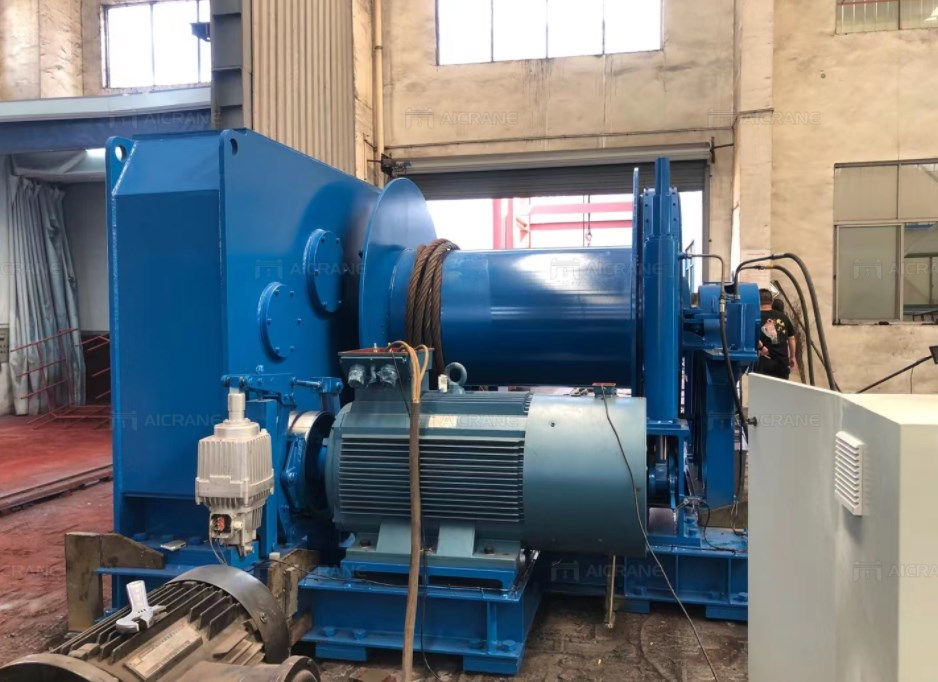Maintaining Your Electric Towing Winch for Ships
- charlespsnow
- Nov 7, 2023
- 4 min read
Electric towing winches are vital components of ships used for a wide range of maritime operations, from mooring and anchoring to emergency response and towing other vessels. The smooth operation and reliability of these winches are essential for the safety and efficiency of maritime activities. To ensure the longevity and proper functioning of your electric towing winch for ships, it is crucial to implement a well-planned maintenance routine. In this article, we will explore the key aspects of maintaining electric towing winches on ships to keep them in optimal working condition.

Regular Inspection
One of the foundational principles of maintaining an electric towing winch on a ship is conducting regular inspections. These inspections serve as the first line of defense against potential issues, helping you identify problems before they escalate. Here's what you should focus on during your routine inspections:
a. Cable or Rope: Regularly inspect the cable or rope for any signs of wear, fraying, or damage. If you notice any issues, the cable should be replaced immediately to prevent accidents or operational disruptions.
b. Mechanical Components: Examine the winch's mechanical components, including the drum, gears, and bearings, for signs of wear, corrosion, or misalignment. Lubricate moving parts as recommended by the manufacturer.
c. Electrical Systems: Inspect the electrical components, including wiring, connectors, and controls, for any signs of damage or corrosion. Ensure all electrical connections are secure.
d. Control Systems: Test the winch's control system to make sure it responds correctly to commands and that safety features are operational. This includes emergency stop mechanisms and overload protection.
Lubrication
Proper lubrication is essential to ensure the smooth and efficient operation of your electric towing winch. Over time, friction and wear can cause the winch's moving parts to deteriorate. Regularly apply the appropriate lubricants as recommended by the manufacturer to keep these components in good condition. Pay particular attention to the winch's bearings, gears, and other rotating parts.
Cable or Rope Maintenance
The cable or rope used with the electric towing winch is a critical component. To ensure it remains safe and reliable, consider the following maintenance tips:
a. Clean the Cable or Rope: After each use, clean the cable or rope to remove saltwater, debris, and other contaminants that can accelerate wear and corrosion.
b. Inspect for Damage: Regularly check the cable or rope for any signs of damage, including kinks, knots, or weakened sections. Damaged sections should be cut and replaced.
c. Re-spooling: Periodically re-spool the cable or rope to prevent it from becoming unevenly wound, which can cause operational issues and reduce its lifespan.
Corrosion Prevention
Ships are exposed to harsh marine environments, making corrosion a common issue. To prevent corrosion from affecting your electric towing winch, consider these strategies:
a. Anti-Corrosion Coatings: Apply anti-corrosion coatings to susceptible components, especially those exposed to saltwater and moisture. These coatings can help protect metal surfaces from rust and degradation.
b. Freshwater Washdown: After each operation in saltwater, thoroughly rinse the winch and its components with freshwater to remove salt residue. This will help extend the life of the equipment.
c. Routine Inspections: Continuously monitor components prone to corrosion, such as bolts, nuts, and fasteners. Replace corroded parts promptly to prevent further damage.
Electrical System Checks
The electrical components of an electric towing winch require special attention. To maintain the winch's electrical systems effectively:
a. Tighten Connections: Check all electrical connections for tightness and security. Loose connections can lead to electrical issues, including power loss or short circuits.
b. Control Panel Maintenance: Inspect the control panel for signs of wear or damage, including buttons, switches, and displays. Ensure that labels and indicators are clear and functional.
c. Emergency Stop Test: Periodically test the emergency stop feature to confirm it functions correctly. This is a crucial safety measure in case of unexpected issues during winch operation.
Record Keeping
Maintaining a detailed maintenance log for your ship's electric towing winch is essential. Keep records of all inspections, maintenance activities, and component replacements. This log serves as a valuable resource for tracking the winch's history, identifying recurring issues, and ensuring compliance with maintenance schedules recommended by the manufacturer.
Professional Service and Repairs
While regular maintenance can address many issues, it's important to recognize that certain repairs and maintenance tasks may require professional expertise. For complex electrical or mechanical problems, it is advisable to consult with a qualified technician or service provider with experience in ship winch systems. Additionally, manufacturers often provide guidelines and authorized service centers for specific winch models.
Conclusion
The proper maintenance of electric towing winches on ships is crucial for safety, efficiency, and the longevity of these essential maritime tools. Routine inspections, lubrication, cable maintenance, corrosion prevention, electrical system checks, record keeping, and professional service are all part of a comprehensive maintenance strategy for your winch.
By following these guidelines and adhering to the manufacturer's recommendations, you can ensure that your electric towing winch remains in optimal working condition. This, in turn, contributes to the overall reliability of your ship's operations and the safety of its crew and cargo. Investing time and effort in winch maintenance is a wise decision for every ship owner and operator.










Comments